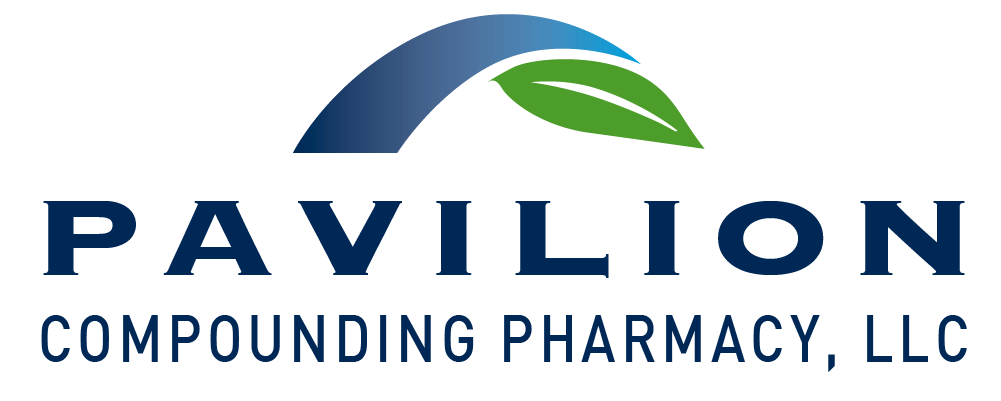Hirsutism Treatment
Hirsutism can be defined as excessive body hair in women, often in areas of the body where hair is unwanted.1 Women who suffer from facial hirsutism often avoid social situations and have been observed to have signs and symptoms of anxiety and depression.2 This issue presents a need for affordable compounding ideas for patients with undesired facial hair. Unfortunately, commercial products used for hirsutism treatment can be very expensive, and they often come with unwanted side effects.
Medications used to treat hirsutism commonly work by acting as antiandrogens. An increase in 5α-reductase activity – the enzyme responsible for catalyzing testosterone into its more potent relative dihydrotestosterone (DHT) – in facial skin is considered to have a major role in the pathogenesis of hirsutism. Therefore, inhibiting 5α-reductase activity has been the main focus in preventing and treating facial hirsutism.
Compounding Options for Hirsutism Treatment
Below are some commonly requested compounding ideas for patients with hirsutism. Compounded medications are made only after receipt of a prescription from a licensed provider for an individual patient. Contact Pavilion Compounding Pharmacy’s clinical pharmacists today by phone or email to discuss your unique needs.
FINASTERIDE
Finasteride 0.25% Facial Cream
Finasteride is a competitive inhibitor of 5α-reductase.4 It is recommended to be taken as a second-line treatment for hirsutism. Based on some guidelines, oral contraceptive pills used as first-line treatment for hirsutism may be combined with finasteride after six months if treatment response is considered suboptimal.5,6 One particular study compared finasteride 0.25% cream to placebo. After six months of treatment, mean hair counts decreased significantly in the finasteride-treated sites compared to no significant change observed in the placebo-applied sites.7
SPIRONOLACTONE
Spironolactone 5% Topical Cream (Clarifying™)
There is some evidence that spironolactone may decrease the degree of hirsutism in some female patients. Spironolactone acts as an antiandrogen and aldosterone antagonist.8 Its major mechanism of action is to compete with DHT for androgen receptors in the skin. It also has a proposed mechanism of increasing the level of sex hormone-binding globulins (SHBG), proteins that circulate in the bloodstream to which testosterone molecules selectively bind. Spironolactone also can increase testosterone clearance via increasing liver hydroxylase and decreasing 5α-reductase activity.9 Although spironolactone lacks studies using it topically for hirsutism, many studies show that spironolactone given orally (50-200 mg daily) may help in treating hirsutism.1 This implies that systemic absorption from topical spironolactone may be a helpful alternative administration route to treat hirsutism.
Harmful side effects from systemic absorption of spironolactone can include allergic reactions like swelling and skin rashes, black or tarry stools, fast or irregular heartbeat, fever and fatigue, muscle pain or cramps, numbness or tingling, trouble breathing, difficulty urinating, and any unusual bleeding.
One study demonstrated that topical spironolactone 5% cream could act as an antiandrogen in human sebaceous glands by competing with DHT receptors, leading to a decrease in DHT levels. Furthermore, the researchers found that inhibiting DHT receptors using spironolactone 5% cream was found to correspond with a decrease in radioactive labeled DHT granules in the sebaceous glands of the treated site. Although this study was using topical spironolactone to treat men with acne vulgaris, the antiandrogen mechanism is still similar to the primary approach to treating hirsutism. Spironolactone 5% cream only had local effects on the site of application, and participants did not experience any adverse side effects.10
ZINC & AZELAIC ACID
Zinc Sulfate Heptahydrate 220 mg Capsules
Azelaic Acid 15% Topical Cream
Zinc appears to be promising for patients with hirsutism. Women with polycystic ovary syndrome (PCOS) commonly exhibit symptoms of hirsutism. In one recent study, women with PCOS who received oral zinc supplements (220 mg zinc sulfate or 50 mg zinc) had significantly decreased hirsutism.11 This may be due to zinc deficiency associated with PCOS patients. Low levels of zinc may initiate or promote fundamental mechanisms of harmful metabolic features, including insulin resistance, decreasing antioxidant capacity and apoptosis induction, which can contribute to hirsutism in females with PCOS.12
Zinc in high enough concentrations can act as a 5α-reductase inhibitor, and when added to azelaic acid – a common organic compound used in some acne treatments – the effect of these two was shown to be additive in blocking 5α-reductase activity. Potent inhibition of 5α-reductase was confirmed in vitro by combining zinc sulfate with azelaic acid; therefore, this could be a helpful combination therapy in the treatment of hirsutism.13
SAW PALMETTO
Vitamin B Complex/Saw Palmetto/Vitamin C/Zinc Capsules
Saw palmetto (Serenoa repens) extract is thought to have some antiandrogen properties.14 This claim has been studied treating patients with androgenic alopecia and PCOS, which are conditions associated with facial hirsutism.15,16 Studies have demonstrated saw palmetto as a potent inhibitor of 5α-reductase.17,18 Overall, however, it shows no difference in antiandrogen effects compared to various antiandrogen control groups in clinical trials.14 Therefore, the effectiveness of saw palmetto for hirsutism in controlled trials is still lacking, but it can still be considered as a complementary therapy for hirsutism because of its antiandrogen activity and safety profile.
About Pavilion Compounding
Pavilion Compounding Pharmacy has been compounding customized medications for over 20 years. Our pharmacists use state of the art technology, innovation, and experience to meet the unique needs of our patients. Please contact our clinical pharmacists today for more information on how we can help!
REFERENCES 1. Brown, J., Farquhar, C., Lee, O., Toomath, R., & Jepson, R. G. (2009, April 15). Spironolactone versus placebo or in combination with steroids for hirsutism and/or acne. Cochrane Database of Systematic Reviews, (2). doi:10.1002/14651858.CD000194.pub2 2. Ekbäck, M. P., Lindberg, M., Benzein, E., & Årestedt, K. (2013). Health-related quality of life, depression and anxiety correlate with the degree of hirsutism. Dermatology, 227(3), 278-284. doi:10.1159/000355356 3. Epocrates. Vaniqa: Eflornithine topical. Retrieved from https://online. epocrates.com/u/10a2317/Vaniqa 4. Moghetti, P., & Toscano, V. (2006). Treatment of hirsutism and acne in hyperandrogenism. Best Practice & Research Clinical Endocrinology & Metabolism, 20(2), 221-234. http://dx.doi.org/10.1016/j. beem.2006.03.003 5. Martin, K. A., Chang, R. J., Ehrmann, D. A., Ibanez, L., Lobo, R. A., Rosenfield, R. L., . . . Swiglo, B. A. (2008). Evaluation and treatment of hirsutism in premenopausal women: An Endocrine Society clinical practice guideline. The Journal of Clinical Endocrinology & Metabolism, 93(4), 1105-1120. doi:10.1210/jc.2007-2437 6. Legro, R. S., Arslanian, S. A., Ehrmann, D. A., Hoeger, K. M., Murad, M. H., Pasquali, R., & Welt, C. K. (2013). Diagnosis and treatment of polycystic ovary syndrome: An Endocrine Society clinical practice guideline. The Journal of Clinical Endocrinology & Metabolism, 98(12), 4565-4592. doi:10.1210/jc.2013-2350 7. Lucas, K. J. (2001). Finasteride cream in hirsutism. Endocrine Practice, 7(1), 5-10. http://dx.doi.org/10.4158/EP.7.1.5 8. Sciarra, F., Toscano, V., Concolino, G., & Di Silverio, F. (1990). Antiandrogens: clinical applications. The Journal of Steroid Biochemistry & Molecular Biology, 37(3), 349-362. 9. McMullen, G. R., & Van Herle, A. J. (1993). Hirsutism and the effectiveness of spironolactone in its management. Journal of Endocrinological Investigation, 16(11), 925-932. doi:10.1007/ BF03348960 10. Berardesca, E., Gabba, P., Ucci, G., Borroni, G., & Rabbiosi, G. (1988). Topical spironolactone inhibits dihydrotestosterone receptors in human sebaceous glands: An autoradiographic study in subjects with acne vulgaris. International Journal of Tissue Reactions, 10(2), 115-119. 11. Jamilian, M., Foroozanfard, F., Bahmani, F., Talaee, R., Monavari, M., & Asemi, Z. (2016). Effects of zinc supplementation on endocrine outcomes in women with polycystic ovary syndrome: A randomized, double-blind, placebo-controlled trial. Biological Trace Element Research, 170(2), 271-278.



